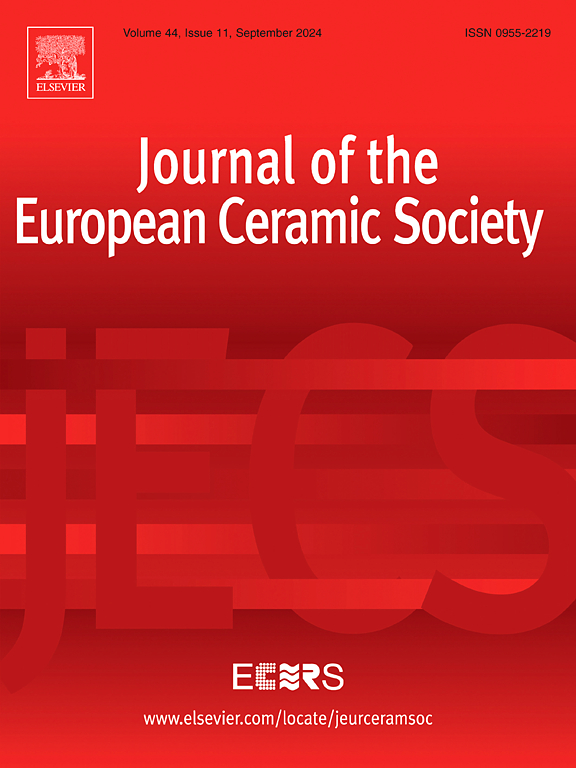Lead-free KNN-based ceramics with enhanced pyroelectric properties and good temperature stability via constructing phase boundary
IF 5.8
2区 材料科学
Q1 MATERIALS SCIENCE, CERAMICS
Journal of The European Ceramic Society
Pub Date : 2025-02-13
DOI:10.1016/j.jeurceramsoc.2025.117285
引用次数: 0
Abstract
In this work, the influence of Li and BiFeO3 (BF) doping based on potassium sodium niobate (KNN) on the pyroelectric properties of the ceramics was investigated. To achieve two-phase coexistence at room temperature, (K0.5Na0.5)0.95Li0.05NbO3(KNLN) ceramic with a high Curie temperature was selected for doping while BF(BiFeO3) with high ferroelectricity, spontaneous polarization, and good temperature stability was chosen as a variable dopant. By establishing the coexistence of O and T phase at room temperature, the energy barrier for polarization reversal is diminished, thereby enhancing the sensitivity of polarization intensity variations with temperature, ultimately leading to an enhancement in their pyroelectric properties. Consequently, (1-x)KNLN-xBF (x = 0.5 %) exhibited a large pyroelectric coefficient p (471 μC/m2/K) along with excellent figure of merits (FOMs) at room temperature: Fi = 1.94 × 10−10 m V−1, Fv = 0.031 m2 C−1, Fd = 1.49 × 10−5 Pa−1/2, with a high Curie temperature (441℃). Moreover, this component also exhibited good temperature stability, the pyroelectric coefficient could reach 387 μC/m2/K after annealing at 200℃ for an hour, which provides a promising KNN-based materials with commercial value for application of pyroelectric infrared radiation detector (PIRD).
求助全文
约1分钟内获得全文
求助全文
来源期刊

Journal of The European Ceramic Society
工程技术-材料科学:硅酸盐
CiteScore
10.70
自引率
12.30%
发文量
863
审稿时长
35 days
期刊介绍:
The Journal of the European Ceramic Society publishes the results of original research and reviews relating to ceramic materials. Papers of either an experimental or theoretical character will be welcomed on a fully international basis. The emphasis is on novel generic science concerning the relationships between processing, microstructure and properties of polycrystalline ceramics consolidated at high temperature. Papers may relate to any of the conventional categories of ceramic: structural, functional, traditional or composite. The central objective is to sustain a high standard of research quality by means of appropriate reviewing procedures.
 求助内容:
求助内容: 应助结果提醒方式:
应助结果提醒方式:


